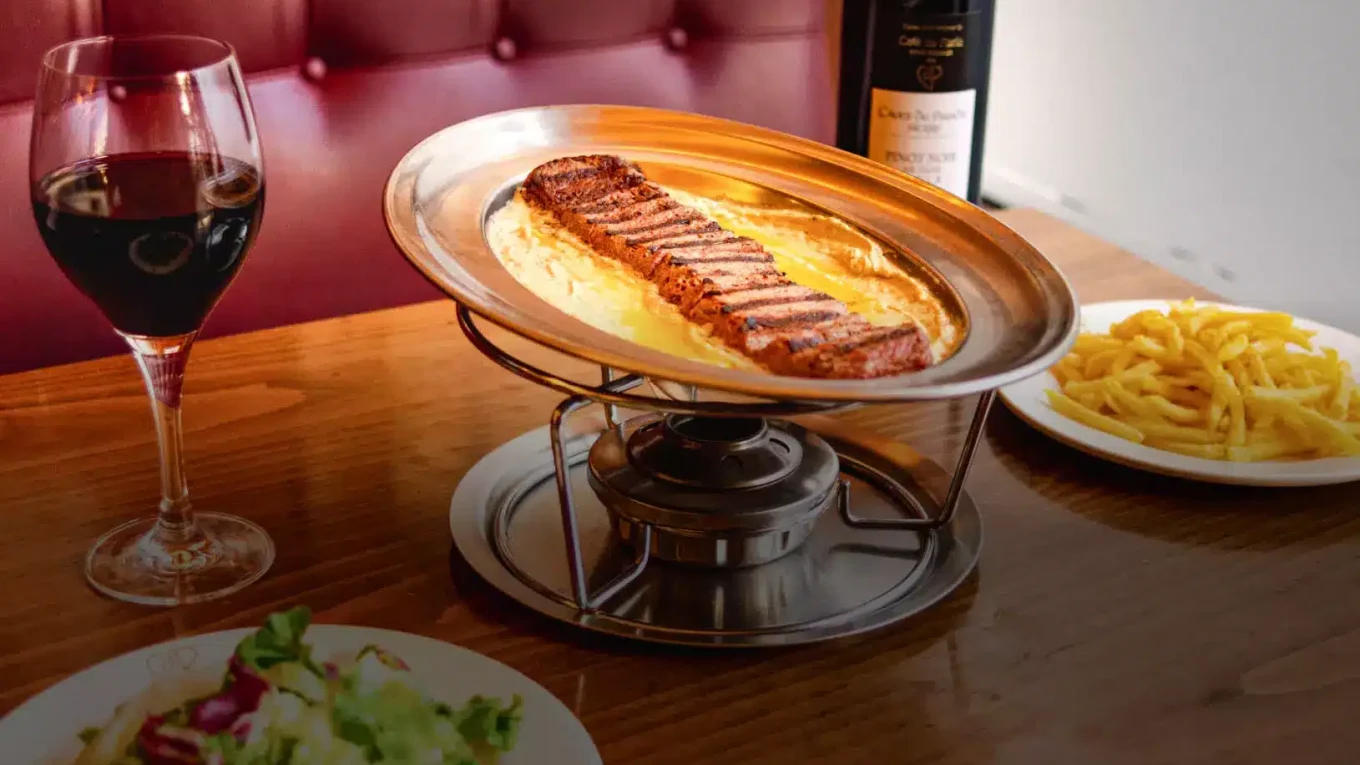The Resurgence of Café de Paris Sauce: A Culinary Journey
Introduction: Celebrating the Revival of Classic Sauces
The demise of classic sauces, though anticipated, has never truly materialized. Fortunately so. These renowned mother sauces, first compiled by Carême and later perfected by Escoffier, faced threats with the emergence of Paul Bocuse and nouvelle cuisine, advocating for the expression of ingredients in their purest form. Alongside these classics, our own traditional sauces have battled through the toughest years of the healthy eating movement, but a couple of spoonfuls of boundless glory are hard to resist. We have a penchant for saucing up our plates, especially when it enhances the dish rather than concealing its flaws, although the latter is embedded in its DNA.
Some sauces have made a strong comeback, perhaps fueled by the resurgence of aristocratic dishes like Solomillo Rossini, Beef Wellington, Hare Royale, or meats served with their pressed juices. It could also be attributed to the fact that misunderstood culinary fusions have left our palates fatigued. It’s becoming increasingly common to find sauces like Perigourdine, Champagne, or Beurre Blanc on menus, while chefs continue to update and lighten them by significantly reducing fats and flours without leaving them devoid of flavor.
In this return of the sauceboat to the table, Café de Paris sauce has not been left behind. A creamy-textured sauce with spicy and herbal notes, enriched with the umami from anchovies and Worcestershire sauce, a hint of sweetness from ketchup – yes, ketchup – and liqueurs, all hiding a subtle spiciness. It can become addictive, especially when the quantities of its endless list of seasonings are mastered and it’s prepared with care. It’s always a delightful accompaniment, particularly with a beef sirloin, although interestingly, in recent years, it has been served with fish and vegetables, not just in upscale restaurants but also facilitated by brands like the European Gautschi and Gourmet Berner, or the Catalan Food&Magic, which have begun commercializing it. Its versatility makes it a gastronomic nirvana for dairy enthusiasts.
Unveiling the Origins and Evolution of Café de Paris Sauce
The death of classic sauces has long been prophesied, but their survival has been nothing short of miraculous. These foundational sauces, meticulously cataloged by culinary luminaries such as Carême and Escoffier, once faced extinction threats with the rise of nouvelle cuisine and the advocacy for the purity of ingredients. However, against all odds, they endured. And among them stands Café de Paris sauce, a culinary gem with a storied past and a vibrant present.
Origins of Café de Paris Sauce: A Culinary Enigma
The tale of Café de Paris sauce begins in the vibrant culinary landscape of Geneva, Switzerland, in the 1930s. Legend has it that this iconic sauce was first concocted in the kitchens of the Coq D’Or restaurant, owned by the Boubier couple. However, the exact recipe remains shrouded in mystery. Despite numerous attempts to unravel its secrets, the original formula remains a closely guarded secret, known only to a select few.
The Boubier family’s shrewdness ensured that the recipe remained a closely guarded secret. It passed from generation to generation, safeguarded like a precious heirloom. Eventually, it found its way to their daughter, who, upon marrying a restaurateur named Monsieur Dumont, continued the legacy by serving the sauce at their establishment, Le Café de Paris. Its unparalleled success propelled the restaurant to fame, leading to its eventual dominance of the menu and even inspiring the establishment of multiple branches across Switzerland, France, and beyond.
Café de Paris Sauce: A Culinary Ambassador
Despite its Swiss origins, Café de Paris sauce has transcended borders, captivating palates far beyond the Alpine nation. Its rich, creamy texture and complex flavor profile have earned it a place of honor not only alongside classic entrecôtes but also as a versatile accompaniment to a myriad of dishes. From Madrid to Zurich, Barcelona to Geneva, this iconic sauce has left an indelible mark on the global culinary scene.
The Culinary Landscape of Café de Paris Sauce: Modern Interpretations
In recent years, Café de Paris sauce has experienced a renaissance, with chefs reimagining its traditional role and incorporating it into innovative culinary creations. No longer confined to the realm of entrecôtes, this iconic sauce has found its way onto menus alongside a diverse array of dishes, from seafood to vegetables, and even sandwiches and burgers.
Recipes and Variations: Deciphering the Secrets of Café de Paris Sauce
While the original recipe of Café de Paris sauce remains a closely guarded secret, chefs and culinary enthusiasts have attempted to recreate its magic through various interpretations and adaptations. While some opt for traditional ingredients and methods, others embrace innovation, incorporating modern twists and unconventional pairings to create unique culinary experiences.
Conclusion: A Culinary Journey Through the Ages
In conclusion, the resurgence of Café de Paris sauce is a testament to the enduring appeal of classic culinary traditions in an ever-evolving gastronomic landscape. From its humble origins in the kitchens of Geneva to its global prominence as a culinary ambassador, this iconic sauce continues to captivate palates and inspire culinary innovation across continents. Whether enjoyed alongside a classic entrecôte or as a modern accompaniment to innovative creations, Café de Paris sauce remains a symbol of culinary excellence and a testament to the timeless allure of classic French cuisine.









